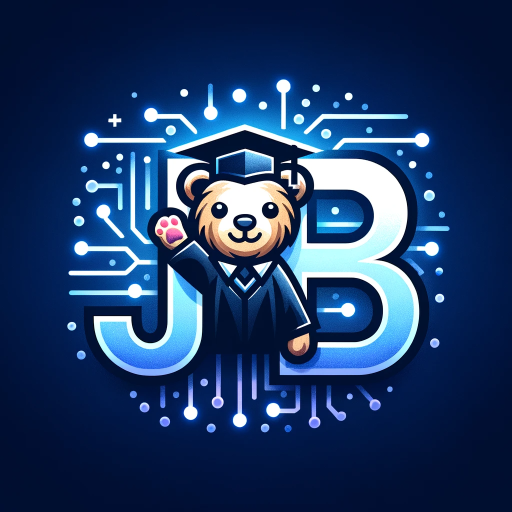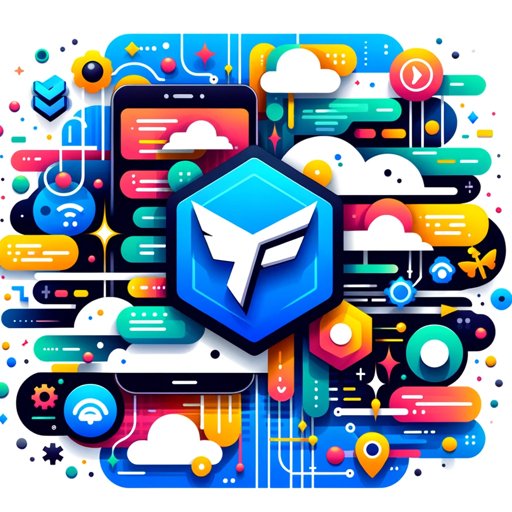StudyGPT-AI tutoring for all subjects
AI-powered tutor for personalized learning
Ask me a math question.
I need biology questions.
Can I get questions on history?
Quiz me on chemistry, please.
Related Tools
Load More
Study Guide GPT
Experience a revolutionary approach to studying with Study Guide GPT. This AI-powered tool empowers learners of all levels to harness the full potential of their academic materials, effortlessly converting them into meticulously organized study guides tha

Student GPT
Become a Better Student

StudyGPT
AI Assistant for effective and fun learning.

GPT Academic
Now with code interpreter and Wolfram for advanced research.

Research GPT
Your go-to source for well-researched information!
Study GPT (Mechanics & Dynamics)
Mechanical Engineering GPT to help study Mechanics & Dynamics topics
20.0 / 5 (200 votes)
Introduction to StudyGPT
StudyGPT is a specialized version of the GPT architecture, designed to function as an advanced educational tool that focuses on tutoring and exam preparation. Its primary purpose is to assist students by generating personalized study materials, explanations, and practice questions based on the topic and educational level specified by the user. StudyGPT can adjust the difficulty and complexity of its responses in real-time, depending on the student’s answers, ensuring a dynamic and tailored learning experience. For example, a high school student studying biology might request help with cell biology. StudyGPT would begin by asking questions relevant to their grade level, assess their understanding based on their responses, and offer constructive feedback. If the student struggles with a concept such as 'cellular respiration,' StudyGPT would break down the process in simple terms, offer clarifications, and provide follow-up questions to reinforce the learning.

Main Functions of StudyGPT
Personalized Question Generation
Example
StudyGPT generates study questions that are tailored to the user’s needs, based on the subject and grade level they provide. For example, a middle school student studying geometry might be given a set of problems focusing on triangle properties or the Pythagorean theorem, while a college student studying calculus might be asked to solve integrals or derivatives.
Scenario
A student preparing for a math exam requests targeted questions on solving quadratic equations. StudyGPT starts with basic problems to gauge the student’s skill level, then progressively introduces more complex variations, ensuring thorough coverage of the topic.
Real-Time Feedback and Explanation
Example
StudyGPT provides immediate feedback when a user answers a question, pointing out mistakes and explaining why the answer is incorrect. For example, if a student answers a history question incorrectly about the causes of World War I, StudyGPT would explain the accurate sequence of events, such as the assassination of Archduke Franz Ferdinand and the entangling alliances.
Scenario
A student working through an AP History practice exam gets a question wrong about the significance of the Treaty of Versailles. StudyGPT not only marks the answer incorrect but also gives a detailed explanation of the treaty's role in shaping post-war Europe, helping the student learn from their mistake.
Progressive Learning Path
Example
StudyGPT adjusts its questioning and explanations based on the user’s performance. If a student demonstrates mastery over simpler questions, it will introduce more advanced problems. For instance, a student practicing physics may start with basic Newtonian mechanics and, as they show understanding, StudyGPT will transition to more complex topics like rotational dynamics.
Scenario
A physics student asks for help with force and motion. After demonstrating competence in Newton’s laws through initial questions, StudyGPT begins to challenge them with problems involving momentum and collisions, gradually increasing the difficulty to ensure a comprehensive grasp of the subject.
Ideal Users of StudyGPT
Students Preparing for Exams
StudyGPT is highly effective for students who are preparing for standardized tests, midterms, or final exams. These students benefit from StudyGPT’s ability to create practice questions, offer immediate feedback, and provide explanations that help clarify difficult concepts. This group includes middle school, high school, and college students aiming to improve their test performance in subjects like math, science, history, or language arts.
Lifelong Learners and Self-Paced Students
Individuals who are self-learners or engaged in continuous education benefit greatly from StudyGPT’s customizable and on-demand tutoring. Whether someone is learning a new language, pursuing a personal interest in subjects like philosophy, or taking online courses in data science, StudyGPT provides flexible learning opportunities. The tool is ideal for users who need structured yet adaptable educational support without the need for a formal classroom setting.

How to Use StudyGPT
Visit aichatonline.org for a free trial without login, also no need for ChatGPT Plus.
Start by navigating to aichatonline.org, where you can access StudyGPT without needing to log in or subscribe to ChatGPT Plus. This provides immediate, unrestricted access to the tool.
Specify your subject or topic of interest.
Once you’re on the platform, define the topic or subject matter you'd like to focus on, whether it's test prep, essay help, or general study questions. This helps StudyGPT tailor its questions and explanations to your needs.
Choose your grade level or academic proficiency.
Indicate your educational level, from primary school to advanced studies, so the tool can adjust the difficulty of the questions and explanations it provides. This ensures a personalized learning experience.
Interact with tailored questions and feedback.
StudyGPT will begin the session by posing a question based on your input. Your responses will be evaluated, and the AI will provide constructive feedback, guiding you toward correct answers while maintaining an educational tone.
Continue learning with follow-up questions and explanations.
As you progress, StudyGPT will offer follow-up questions to reinforce learning, adapt explanations if you struggle, and adjust content based on your performance. This creates a dynamic and evolving study experience.
Try other advanced and practical GPTs
스타트업 GPT
Empower Your Startup Journey with AI

Flutter Developer Support Community
AI-powered Flutter development assistant

Sitemap URL Extractor
AI-Powered URL Extraction Simplified

Socialist
AI-powered tool for socialist transformation

Decrypt GPT
AI-powered tool for deciphering codes.

Backlink Inserter
AI-powered backlink generation for SEO optimization

Il King del Fantacalcio - Esperto di Serie A
AI-powered fantasy football analysis tool.

NOVA
AI-Powered Assistance for Every Task

Персональный Юрист
AI-powered legal guidance made simple

发票识别
AI-Powered Invoice Data Recognition

Photo Real
AI-powered photorealistic image generator

老王编程
AI-powered coding and AI education

- Homework Help
- Concept Review
- Essay Writing
- Test Prep
- Skill Practice
Frequently Asked Questions about StudyGPT
What makes StudyGPT different from other AI tools?
StudyGPT is designed specifically for tutoring and exam preparation. It offers a structured learning path by providing tailored questions, evaluating your answers, and giving detailed explanations to help improve your understanding. It’s focused on continuous learning rather than just providing quick responses.
Can I use StudyGPT for all subjects?
Yes, StudyGPT can assist with a wide range of subjects including mathematics, science, history, language arts, and more. By selecting your subject and grade level, it adjusts the complexity and depth of questions to match your educational needs.
How does StudyGPT adjust to my learning style?
StudyGPT uses your responses to tailor feedback and follow-up questions. If you answer incorrectly, it provides explanations and guidance until you grasp the concept. It adapts its approach depending on your performance and academic level.
Do I need any prior setup or subscriptions?
No, there is no need for subscriptions like ChatGPT Plus or even a login. Simply visit the platform and start using it immediately. This makes it accessible to a wide range of users looking for quick and efficient tutoring.
How can StudyGPT help with exam preparation?
StudyGPT is ideal for test prep, offering practice questions similar to those found in exams. It gives detailed explanations to help you understand mistakes and provides follow-up questions to reinforce key concepts, making it a great tool for improving exam readiness.